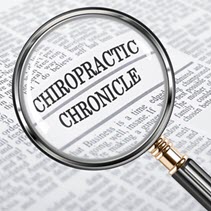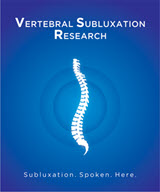New Research on Genetic Mutations & Chiropractic

“Research indicates that minor shifts in the structure of the spine may impact function, suggesting that these structural shifts may be a factor in a number of disorders. Structural shifts may lead to nerve obstruction and could possibly be involved in a host of health problems related to genetic mutations and their related challenges” stated Dr. Matthew McCoy, a chiropractor, public health researcher and editor of the journal that published the study.
McCoy added, “It’s reasonable to suggest that if you obstruct or damage the nerves exiting the spine, the result of the obstruction can have far reaching implications on the functioning of the body. Through research reports like this we are finding that correcting these structural shifts reduces nerve obstruction, bringing about marked improvement in children who are experiencing a variety of health challenges even if they are related to genetic mutations.
Research is revealing that there is a relationship between abnormalities in the spine, the nervous system, and the brain. Basic science and clinical research shows that the proper development of the nervous system brain relies heavily on proper structure and movement of the spine from an early age. Research has shown not only that the developing nervous system relies on normal structural integrity and joint movement, but that complex neurochemical communication and pathways involved in helping humans to respond to their environment are tied into spinal biomechanics and their related neurological pathways.
According to researchers the nervous system controls and coordinates all functions of the body and structural shifts in the spine can occur that obstruct the nerves and interfere with their function. By removing the structural shifts, chiropractic improves nerve supply and function.
The 5-year-old girl in this study with CASK gene mutation had been experiencing problems with sleep, digestion, behavior, allergies, gait, and dysautonomia. She had overall hypotonia and gross motor delays. She was non-verbal and had poor eye contact and affect.
The chiropractor examined her and found abnormal reflexes along with structural shifts in her upper neck, mid back, and sacrum. Thermographic scans confirmed the dysautonomia. These structural shifts can lead to obstruction of the nerves and it is this obstruction, called vertebral subluxations, that chiropractors correct.
Following chiropractic adjustments, she experienced improved sleep and digestion and had less emotional meltdowns as her behavior improved. In addition, her allergy attacks reduced and the problems walking resolved.
The study’s author called for additional research to investigate the clinical implications of chiropractic in this population.
Contact Information:
Matthew McCoy DC, MPH
Journal of Pediatric, Maternal & Family Health – Chiropractic
http://www.chiropracticpediatricresearch.com
support@vertebralsubluxationresearch.com

Research News
- The 19th International Research and Philosophy Symposium (IRAPS): Bridging Philosophy, Science, and Practice in Chiropractic
- New Study Uncovers the Broad Systemic Benefits of Chiropractic Care on Nervous, Endocrine, and Immune Systems
- The Hidden Power of the Spine: How Vertebral Subluxation Impacts Health Through Systems Biology
- New Study Sheds Light on Vertebral Subluxation and Systems Biology
- Understanding Cervical Spine Movement and Motor Vehicle Accidents













